Simple Lead Magnet Templates To Boost Convertions
Struggling to turn website visitors into valuable leads? If your sales funnel feels more like a sieve than a magnet, it’s time for a change. This post reveals how simple, strategic lead magnets can dramatically transform your lead generation efforts.
We’ll give you the exact templates and insights you need to create irresistible offers that not only attract your ideal audience but also consistently convert them into qualified prospects, filling your pipeline with potential customers.
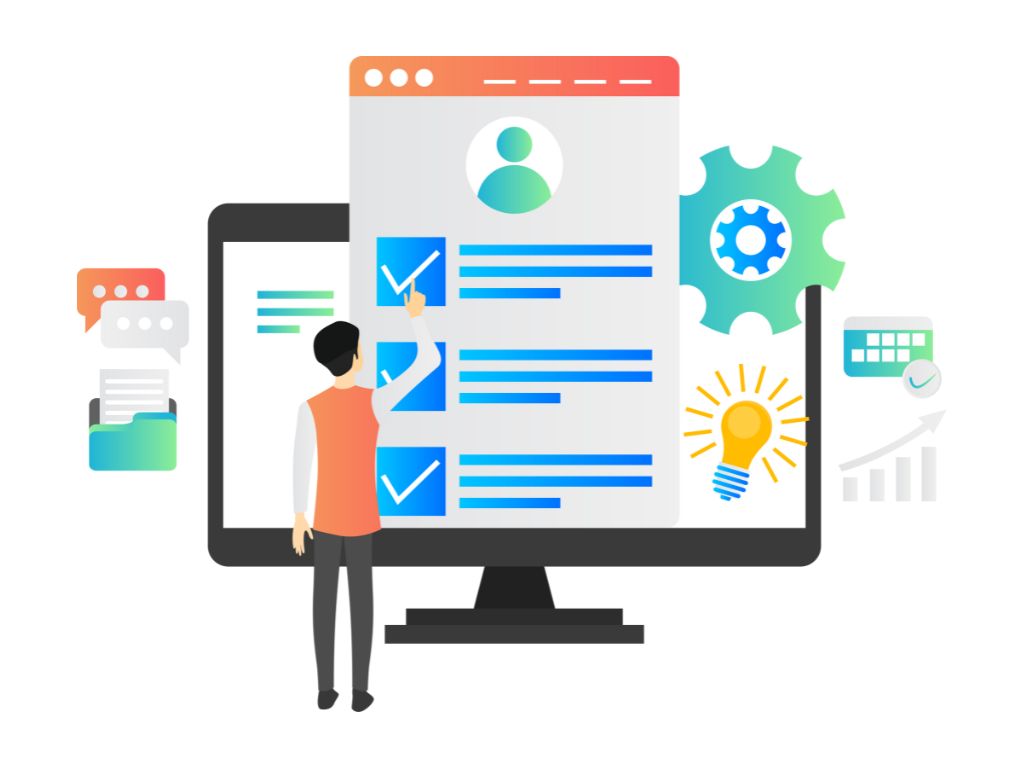
Why Your Funnel Needs a High-Converting Lead Magnet
Imagine your marketing funnel as a well-oiled machine designed to convert curious visitors into loyal customers. But what happens if the first gear, the one that pulls people into the machine, isn’t engaging enough? You’re left with a leaky bucket, losing potential leads before you even have a chance to show them your value.
This is precisely where a high-converting lead magnet becomes indispensable. It’s not just a “freebie”; it’s the critical first step in building a relationship with your audience, providing immediate value in exchange for their contact information. Think of it as the ultimate ice-breaker, the handshake that initiates trust and opens the door to further communication.
Here’s why your funnel simply can’t thrive without one:
- Captures Attention & Generates Leads: In a sea of online noise, a compelling lead magnet acts as a beacon, drawing in your ideal audience by solving a specific problem or fulfilling a desire they have right now. It transforms anonymous website visitors into identifiable prospects.
- Grants Permission for Communication: Unlike intrusive ads, a lead magnet operates on the principle of permission marketing. When someone willingly provides their email for your valuable resource, they’re giving you explicit consent to continue the conversation, making subsequent emails and offers much more effective.
- Qualifies Prospects: A well-designed lead magnet naturally attracts individuals who are genuinely interested in what you offer. For example, if you sell marketing software, a guide on “5 Ways to Boost Your SEO” will primarily appeal to those already thinking about their online visibility, effectively pre-qualifying them as potential customers.
- Establishes Authority & Trust: By providing instant, tangible value, you immediately position yourself as an expert and a helpful resource. This initial demonstration of your knowledge and generosity builds a foundation of trust, making prospects more receptive to your paid solutions down the line.
- Feeds Your Nurture Sequence: Once you have a lead’s contact information, the real magic begins. Your lead magnet is the gateway to your email nurture sequence, allowing you to consistently deliver more value, educate them about your offerings, and guide them smoothly through the buyer’s journey. Without that initial contact point, your nurture sequence has no one to nurture!
- Accelerates the Sales Cycle: By providing solutions to early-stage problems, a lead magnet helps move prospects from awareness to consideration much faster. They arrive at your sales team (or later stages of your funnel) already informed and primed, shortening the overall sales cycle.
In essence, a high-converting lead magnet is the engine that drives your lead generation efforts, ensuring your funnel is consistently filled with engaged, qualified prospects ready for what comes next.
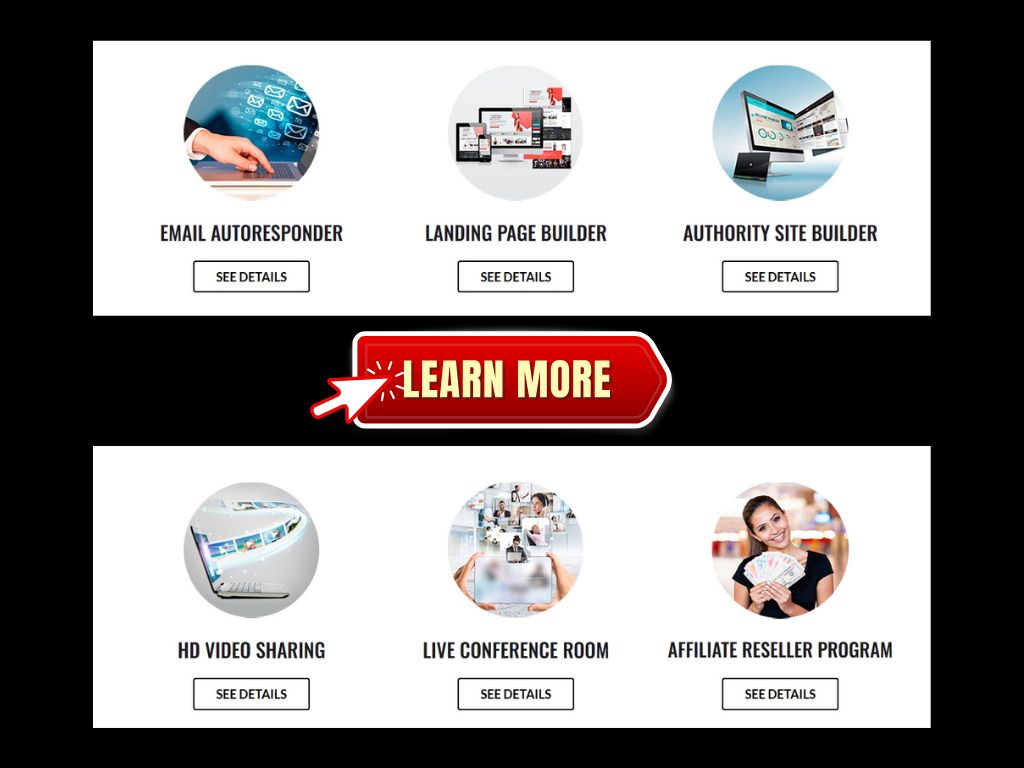
The Core Principles of Irresistible Lead Magnets
So, what makes a lead magnet truly irresistible? It’s not just about giving something away for free; it’s about crafting a resource that your audience craves and perceives as incredibly valuable. Here are the core principles that elevate a simple freebie into a powerful lead-generating machine:
- Solves a Specific Problem (or Fulfills a Specific Desire): The most effective lead magnets zero in on a single, pressing pain point or a clear aspiration your target audience has. Don’t try to be everything to everyone. The more specific the problem, the more targeted and effective your solution will be. Think “How to Get Your First 100 Email Subscribers” rather than “Marketing Tips.”
- High Perceived Value: Even if it’s free, it needs to look and feel valuable. This means professional design, well-written content, and a clear promise of transformation. If it looks like something thrown together in 5 minutes, it won’t inspire trust or action. Think of it as a mini version of your paid product or service – a taste of the quality to come.
- Easy & Quick to Consume: People are busy. Your lead magnet should offer a quick win, not a semester-long course. Whether it’s a checklist, a short template, or a concise guide, it should be digestible in a short amount of time (e.g., 5-15 minutes) and provide immediate gratification. The faster they can consume it, the faster they’ll experience its value.
- Immediately Actionable: The best lead magnets empower the user to take action right away. Provide clear steps, templates, or frameworks they can implement as soon as they download it. This immediate application reinforces the value and builds momentum, making them more likely to engage with your future content.
- Relevant to Your Core Offering: This is crucial. Your lead magnet isn’t just a random gift; it’s the first step on a journey that ideally leads to your paid products or services. It should naturally prime your audience for what you sell, addressing an early-stage problem that your main offering solves at a deeper level. For instance, if you sell productivity software, a “Daily Planner Template” makes perfect sense.
- Niche-Specific & Audience-Targeted: Understand your ideal customer deeply. What are their specific struggles, aspirations, and language? Tailor your lead magnet to resonate directly with them. A lead magnet for small business owners will look very different from one for aspiring artists, even if both touch on “marketing.”
- Unique & Original: While inspiration is great, strive to offer a fresh perspective or a unique compilation of information. In a crowded digital landscape, standing out is key. Can you combine existing knowledge in a novel way, or offer a solution that isn’t widely available? This establishes your unique value proposition from the get-go.
Choosing the Right Lead Magnet for Your Audience & Funnel Stage
The effectiveness of your lead magnet isn’t just about its inherent value; it’s about its perfect fit for your audience and their current stage in the buyer’s journey. There’s no one-size-fits-all solution, and what works wonders for one business might fall flat for another.
Audience First: Know Who You’re Talking To
Before you even consider the funnel stage, you must deeply understand your target audience. Ask yourself:
- What are their most pressing pain points right now? Are they just realizing they have a problem, or are they actively seeking solutions?
- What content formats do they prefer? Are they visual learners who love videos, or do they prefer detailed written guides? Do they respond well to interactive quizzes?
- What’s their current level of knowledge? Are they beginners needing foundational information, or are they advanced users looking for sophisticated strategies?
- How much time are they willing to invest? A busy entrepreneur might prefer a quick checklist over a comprehensive eBook.
Your answers to these questions will significantly influence the type and topic of lead magnet you create.
Matching Lead Magnets to Funnel Stages
Once you have a clear picture of your audience, consider where they are in their journey. This will help you craft a lead magnet that addresses their immediate needs and gently guides them to the next step.
1. Top of the Funnel (ToFu): Awareness & Discovery
At this stage, your audience is just becoming aware of a problem or a need. They’re looking for information, not necessarily solutions yet. Your lead magnet here should be broad, educational, and easy to consume, offering a quick win or a foundational understanding.
- Goal: Capture broad interest, educate on a problem they might not fully understand.
- Characteristics: Low commitment, quick wins, highly actionable, problem-focused.
- Examples:
- Checklists/Worksheets: Perfect for immediate action and organization.
- Example: “The Ultimate Blog Post Pre-Publish Checklist,” “Workout Planner Template.”
- Simple Guides/Cheat Sheets: Concise, digestible information on a specific topic.
- Example: “Your Quick Guide to Boosting Instagram Engagement,” “5 Steps to a More Productive Morning.”
- Resource Lists/Toolkits: Curated collections that save your audience time and effort.
- Example: “Top 10 Free SEO Tools for Small Businesses,” “Essential Graphic Design Resources for Beginners.”
- Quizzes/Assessments: Engaging and provide personalized insights, helping users self-identify their needs.
- Example: “What’s Your Business’s Marketing Persona?”, “Discover Your Productivity Style.”
- Short Video Tutorials: For visual learners who prefer direct instruction.
- Example: “How to Set Up Your First Google My Business Profile.”
2. Middle of the Funnel (MoFu): Consideration & Evaluation
Here, your audience understands their problem and is actively researching potential solutions. They’re evaluating options, including yours. Your lead magnet should offer deeper insights, demonstrate your expertise, and help them understand how specific solutions work.
- Goal: Provide deeper insights, demonstrate expertise, help them evaluate solutions.
- Characteristics: Higher commitment, more detailed, solution-oriented, positions you as an authority.
- Examples:
- In-depth Guides/eBooks: Comprehensive resources that dive deep into a topic, positioning you as an expert.
- Example: “The Complete Guide to Content Marketing Strategy,” “Mastering Google Analytics: A Step-by-Step Guide.”
- Webinars/Masterclasses: Live or recorded sessions offering significant value and direct engagement.
- Example: “How to Double Your Sales in 90 Days Masterclass,” “Advanced Facebook Ads Strategies Workshop.”
- Case Studies/Success Stories: Provide social proof and demonstrate the real-world impact of your methods or solutions.
- Example: “How Company X Increased Leads by 200% Using Our SEO Services.”
- Templates/Frameworks: Ready-to-use tools that apply your methodology, saving time and effort.
- Example: “Marketing Funnel Blueprint Template,” “Client Onboarding Workflow for Freelancers.”
- Mini-Courses/Email Courses: Drip-fed content that builds a habit of engagement and provides structured learning.
- Example: “5-Day Email Marketing Challenge,” “Beginner’s Guide to Stock Trading (Email Series).”
3. Bottom of the Funnel (BoFu): Decision & Action
At this stage, your audience is ready to make a purchase or commit. They need final nudges, direct experience with your offering, or personalized solutions to overcome any remaining objections. While less common for “lead magnets” in the traditional sense, these resources are powerful conversion tools.
- Goal: Help them make a final decision, overcome objections, or experience your solution directly.
- Characteristics: Very high commitment, specific to your product/service, directly leads to conversion.
- Examples:
- Free Consultations/Discovery Calls: For service-based businesses, offering personalized advice.
- Example: “Free 30-Minute Marketing Strategy Session.”
- Free Trials/Demos: For software or digital products, allowing hands-on experience.
- Example: “7-Day Free Trial of Our Productivity Software,” “Personalized Demo of Our CRM.”
- Personalized Audits/Assessments: Tailored feedback that highlights specific pain points your solution addresses.
- Example: “Free SEO Website Audit,” “Social Media Presence Review.”
- Pricing Guides/Comparison Checklists: Help prospects compare your offering to competitors, highlighting your unique value.
- Example: “Compare Our CRM Plans: Which One Is Right for You?”
By strategically aligning your lead magnet with your audience’s needs and their position in the funnel, you transform a simple freebie into a powerful accelerant for your entire marketing machine. Remember to test different formats and topics to see what resonates best with your specific audience!
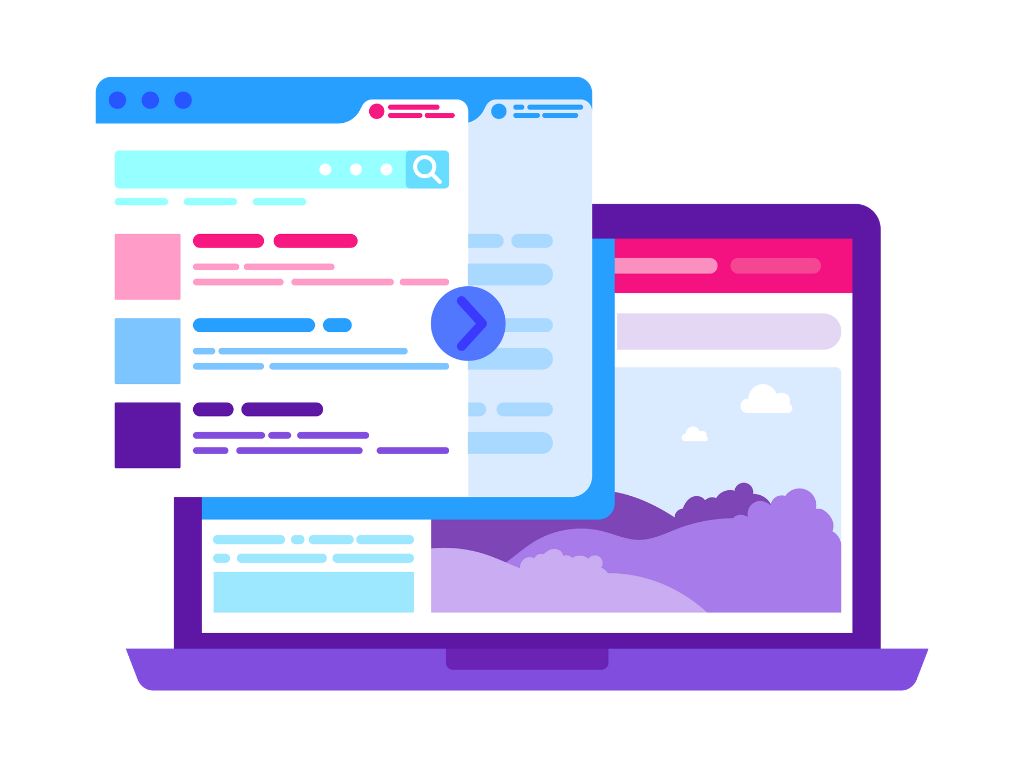
Template 1: The Instant-Value Checklist or Cheat Sheet
Imagine your audience facing a common challenge, feeling overwhelmed, or simply needing a clear path forward. That’s where the Instant-Value Checklist or Cheat Sheet swoops in as their digital superhero. This lead magnet isn’t about deep dives or lengthy explanations; it’s about providing immediate, actionable steps or condensed, critical information that solves a specific, urgent problem. Think of it as a concise, easy-to-digest roadmap or a powerful summary they can use right now.
Why It’s a Conversion Powerhouse
- Low Barrier to Entry: People are busy. A checklist or cheat sheet promises a quick win without a huge time commitment, making it incredibly appealing. It’s easy to download, easy to consume, and easy to apply.
- Immediate Gratification: Users can see the value and start implementing the advice almost instantly. This rapid satisfaction builds trust and positions you as a helpful authority right from the start.
- Highly Actionable: The very nature of a checklist or cheat sheet is action-oriented. It guides users step-by-step, making complex tasks seem manageable and achievable.
- Perceived High Value: Even though it’s quick, a well-crafted checklist saves your audience time, effort, and potential mistakes, making its perceived value much higher than its length might suggest.
- Printable & Shareable: Many people love to print out checklists to tick off items, and their concise nature makes them highly shareable among colleagues or friends facing similar issues.
Ideal For:
This template shines brightest at the Top of the Funnel (ToFu), where your audience is just becoming aware of a problem or seeking initial information. It’s perfect for:
- Solving a Micro-Problem: Addressing a single, specific pain point (e.g., “how to optimize an Instagram bio”).
- Simplifying a Complex Process: Breaking down a daunting task into manageable steps (e.g., “website launch checklist”).
- Providing Quick Reference: Summarizing key information that’s often forgotten or hard to find (e.g., “SEO keyword research cheat sheet”).
- Onboarding or Pre-Work: Preparing someone for a larger task or a future offering (e.g., “pre-webinar prep list”).
How to Create Yours:
- Pinpoint a Specific Problem: What’s one common, urgent challenge your audience faces that you can solve quickly? Focus on one thing.
- Outline the Steps/Information: Break down the solution into clear, concise, actionable steps or key pieces of information. Use bullet points, short sentences, and bolded keywords.
- Keep it Concise: Aim for 1-3 pages maximum. This isn’t an eBook.
- Make it Visually Appealing: Use clean design, clear headings, ample white space, and perhaps a branded color palette. A professionally designed (but simple) PDF template will significantly boost its perceived value.
- Include a Call to Action: At the end, gently guide them to the next step. This could be inviting them to join your email list (if they haven’t already), visit a relevant blog post, or explore a related product/service.
Pro-Tip: Don’t just list steps. Add a brief explanation for why each step is important, or a quick tip for execution, to further enhance its value.
Examples in Action:
- For a Marketing Coach: “The 10-Point Website Audit Checklist Before Launching Your Ad Campaign”
- For a Fitness Trainer: “Your Pre-Workout Fueling & Hydration Cheat Sheet”
- For a Financial Advisor: “The Essential Document Checklist for First-Time Homebuyers”
- For a Productivity Expert: “The Daily Digital Detox Checklist for Less Screen Time”
- For a Web Designer: “Client Onboarding Checklist: From Inquiry to Kick-off Call”
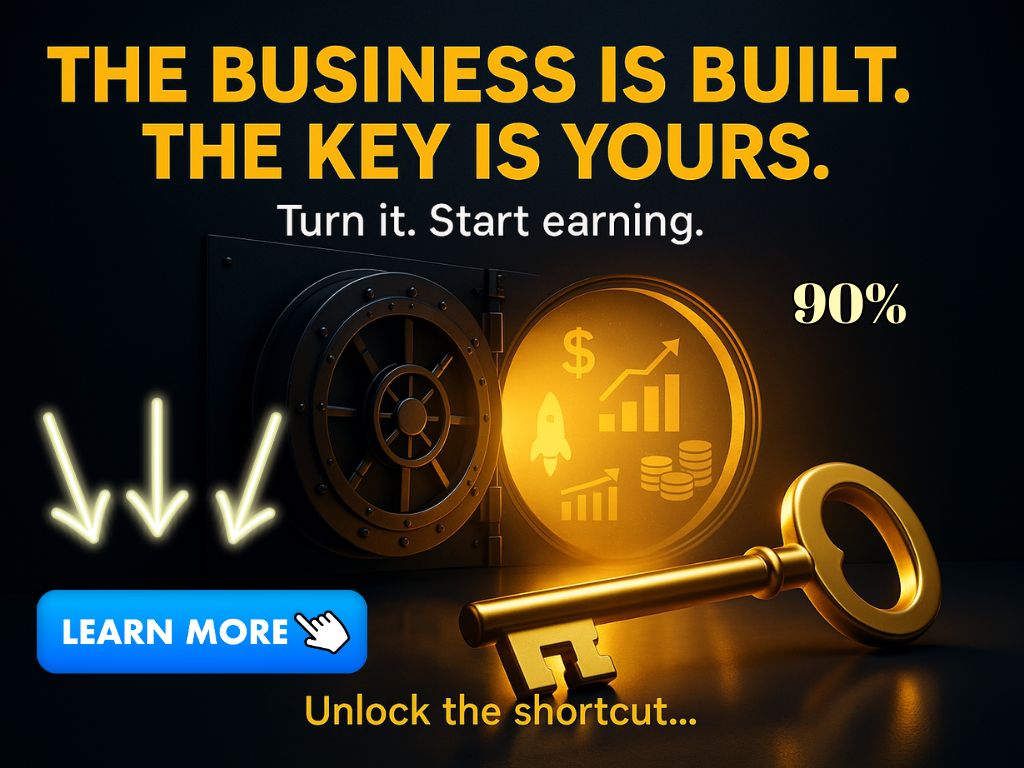
Template 2: The Comprehensive Mini-Guide or eBook
When your audience is ready to move beyond quick fixes and dive deeper into understanding a specific problem or solution, the Comprehensive Mini-Guide or eBook steps in.
This lead magnet isn’t about immediate, bite-sized actions; it’s about providing a more substantial, in-depth resource that educates, informs, and positions you as the definitive authority on a particular topic.
Think of it as a condensed masterclass, a detailed blueprint, or a mini-textbook designed to provide significant value and guide your prospect’s understanding.
Why It’s a Conversion Powerhouse
- Establishes Deep Authority & Expertise: By offering a thorough exploration of a topic, you demonstrate profound knowledge and thought leadership, building significant trust and credibility with your audience.
- Educates & Nurtures Effectively: This format allows you to explain complex concepts, address multiple facets of a problem, and guide the reader through a structured learning process, moving them further down the funnel.
- Higher Perceived Value: The length and depth of a mini-guide or eBook inherently convey a higher value than a simple checklist. Prospects are more willing to exchange their contact information for a resource that promises substantial learning.
- Pre-Qualifies & Primes Prospects: The commitment required to consume an eBook naturally pre-qualifies leads who are genuinely interested in your niche. It also allows you to subtly introduce your unique methodologies and prime them for your paid solutions.
- Longer Shelf Life: A well-researched and evergreen guide can remain relevant for a longer period, continuing to generate leads and build your brand’s reputation over time.
Ideal For:
The Comprehensive Mini-Guide or eBook truly shines at the Middle of the Funnel (MoFu). At this stage, your audience has identified their problem and is actively researching solutions. They’re looking for detailed information to help them evaluate options and understand how to solve their challenges. It’s perfect for:
- Explaining Complex Topics: When a simple checklist or cheat sheet isn’t enough to convey the necessary information (e.g., “The Complete Guide to Building a Sales Funnel”).
- Demonstrating Your Unique Methodology: Sharing your step-by-step process or framework for achieving a specific outcome (e.g., “Our 7-Step System for Doubling Your Organic Traffic”).
- Addressing Common Objections or Misconceptions: Providing in-depth answers to frequently asked questions or debunking myths within your industry.
- Building a Foundational Understanding: Laying the groundwork for future, more advanced content or paid offerings.
- Showcasing Research & Data: Presenting insights backed by statistics or case studies.
How to Create Yours:
- Select a Specific, Yet Comprehensive Topic: Choose a subject that allows for deeper exploration but isn’t so vast it becomes overwhelming. Focus on a significant problem your audience faces.
- Outline a Clear Structure: Treat it like a mini-book with an introduction, distinct chapters or sections, and a conclusion. Use headings, subheadings, and bullet points to break up text.
- Provide Rich, Actionable Content: While it’s comprehensive, ensure the information is still practical and leads to actionable insights. Include examples, case studies, or actionable tips where appropriate.
- Prioritize High-Quality Writing & Design: Professionalism is paramount here. Invest in clear, engaging writing, and a polished, branded design (cover, internal layout, consistent fonts, and colors). This significantly impacts perceived value.
- Include a Strong Call to Action: At the end, clearly guide the reader to the next logical step in your funnel. This could be a webinar registration, a free consultation, a demo of your product, or a link to a relevant sales page.
- Aim for a Manageable Length: While “comprehensive,” remember it’s still a mini-guide. Typically, 5-20 pages is a good sweet spot, though some can go up to 30-50 for truly in-depth topics.
Pro-Tip: Don’t just dump information. Focus on the transformation you’re promising. How will the reader’s situation improve or their understanding deepen after consuming your guide? Frame your content around solving their problem and leading them to a better state.
Examples in Action:
- For a Marketing Agency: “The Ultimate Guide to Local SEO for Small Businesses: Dominate Your Local Search Results”
- For a Life Coach: “Unlocking Your Potential: A 7-Step Blueprint for Overcoming Self-Doubt”
- For a SaaS Company: “Integrating Your CRM for Automated Lead Nurturing: A Step-by-Step Guide”
- For a Health & Wellness Brand: “The Science of Sleep: Your Comprehensive Guide to Restful Nights & Energized Days”
- For a Financial Advisor: “Navigating Your First Investment: A Beginner’s eBook to Building Wealth”
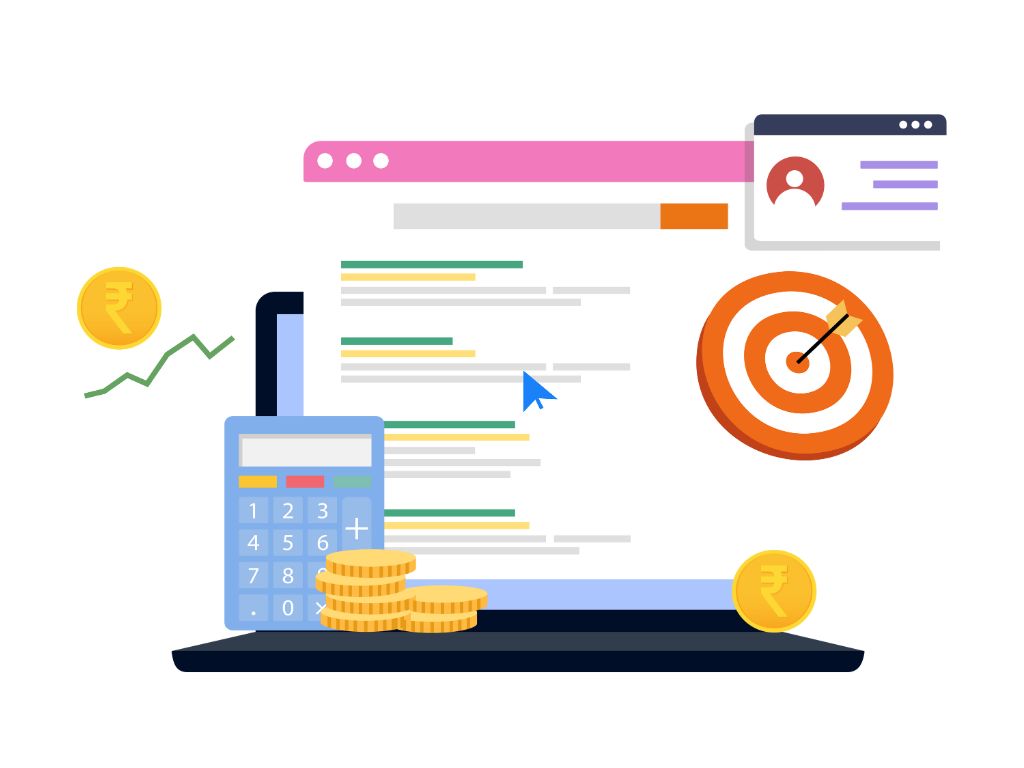
Template 3: The Engaging Quiz or Assessment
When your audience is looking for more than just information – when they want to understand themselves better, or get personalized advice – the Engaging Quiz or Assessment steps up to the plate. This lead magnet isn’t about passive consumption; it’s an interactive experience designed to captivate your audience, offer tailored insights, and gather valuable data about their specific needs.
Think of it as a personalized journey of self-discovery that naturally leads them closer to your solutions.
Why It’s a Conversion Powerhouse
- High Engagement & Interactivity: People love learning about themselves. Quizzes are inherently fun and engaging, making them highly shareable and memorable. This active participation keeps users invested.
- Personalized Value: Unlike a generic guide, a quiz provides results tailored to the individual user. This personalization makes the lead magnet feel incredibly valuable and directly relevant to their situation, fostering a strong sense of trust.
- Self-Discovery & Problem Awareness: Quizzes help users articulate their own pain points, identify their current stage, or uncover specific needs they might not have fully recognized. This self-discovery primes them for your solutions.
- Rich Data Collection: Beyond just an email address, quizzes allow you to gather incredibly valuable demographic, psychographic, and behavioral data about your leads. This information is gold for segmenting your audience and personalizing future communication.
- Low-Pressure Lead Capture: Asking for an email to deliver personalized results feels natural and less transactional than simply offering a free download. It’s a fair exchange for a tailored insight.
- Viral Potential: People love sharing their quiz results on social media, especially if the results are positive or insightful. This organic sharing extends your reach and brings new, qualified leads into your funnel.
Ideal For:
The Engaging Quiz or Assessment is incredibly versatile and can shine at both the Top of the Funnel (ToFu) and Middle of the Funnel (MoFu), depending on its complexity and goal. It’s perfect for:
- Helping Users Self-Identify: Guiding prospects to understand their “type,” “style,” or current status related to your niche (e.g., “What’s Your Business’s Marketing Personality?”).
- Personalized Recommendations: Directing users to the most relevant product, service, or content based on their answers (e.g., “Find Your Perfect Skincare Routine”).
- Assessing Knowledge or Readiness: Gauging a prospect’s understanding of a topic or their readiness for a particular solution (e.g., “Are You Ready to Scale Your Business?”).
- Sparking Curiosity: Engaging a broad audience with a fun, intriguing topic that subtly introduces your expertise.
- Segmenting Your Audience: Automatically categorizing leads based on their quiz results, allowing for highly targeted follow-up sequences.
How to Create Yours:
- Define Your Goal & Topic: What specific insight or recommendation will your quiz provide? How does it connect to a problem your audience faces or a desire they have? Choose a catchy, intriguing title.
- Outline Key Outcomes/Results: Before writing questions, determine the 3-5 distinct results or profiles your quiz will generate. Each result should offer clear value and lead naturally to a specific next step in your funnel.
- Craft Engaging Questions: Develop 5-10 questions that lead to your desired outcomes. Use a mix of multiple-choice, true/false, or even image-based questions. Make them thought-provoking but easy to answer.
- Write Personalized Result Pages: For each outcome, create a dedicated results page or email. This should include:
- A summary of their “type” or score.
- An explanation of what that means for them.
- Actionable advice or insights based on their result.
- A clear Call to Action (CTA) to the next logical step (e.g., a specific product page, a targeted blog post, a consultation booking).
- Choose a Quiz Builder Tool: Platforms like Interact, Typeform, Riddle, LeadQuizzes, or Outgrow make it easy to design, build, and embed interactive quizzes without coding.
- Integrate Lead Capture: Ensure the quiz is set up to capture email addresses (and potentially other data) before revealing the results. Explain why you need their email (e.g., “We’ll email your personalized results!”).
- Design for Shareability: Include social sharing buttons on the results page so users can easily share their outcomes.
Pro-Tip: Don’t just give them a label. For each result, provide concrete, actionable advice and a clear “what next” that directly aligns with your paid offerings. For instance, if a quiz identifies someone as a “Struggling Solopreneur,” the result could offer a link to a relevant coaching package or a specific course.
Examples in Action:
- For a Marketing Agency: “What’s Your Business’s Marketing Personality? (And How to Leverage It!)”
- For a Fitness Coach: “Discover Your Ideal Workout Style: Find the Routine That Sticks”
- For a Life Coach: “What’s Your Primary Limiting Belief Holding You Back?”
- For a SaaS Company: “Which CRM Feature Is Most Crucial for Your Growing Business?”
- For an Interior Designer: “What’s Your Home Decor Style? Get Personalized Design Tips!”
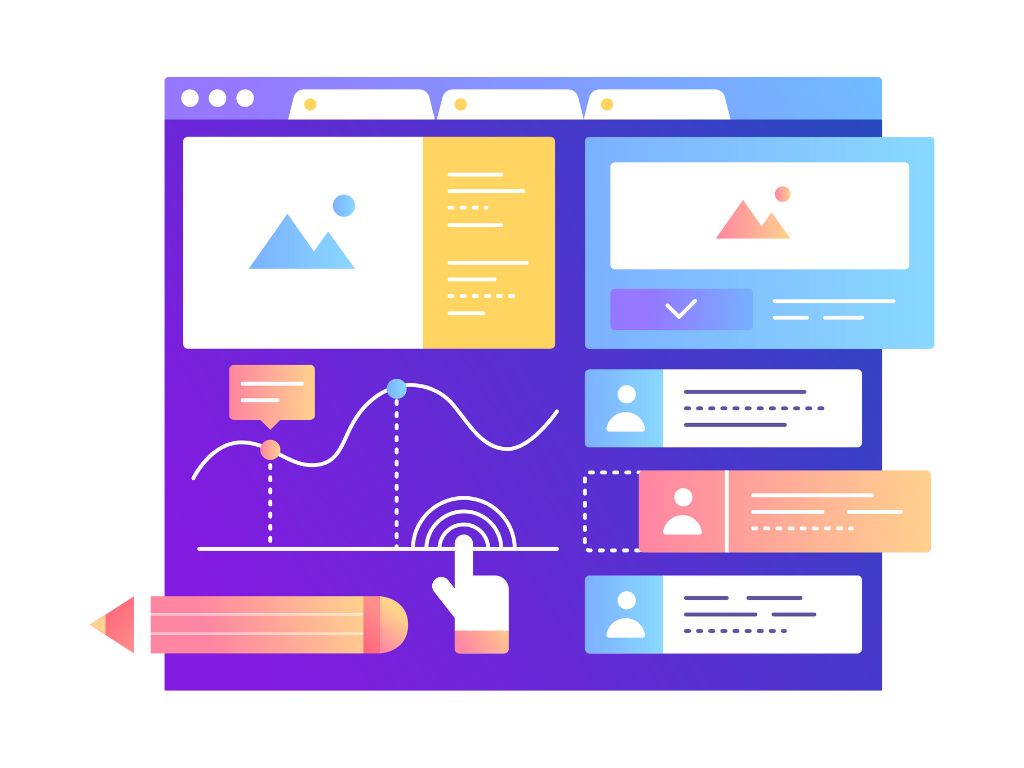
Template 4: The Practical Toolkit or Template Pack
When your audience is beyond just understanding a problem and is actively seeking tangible tools to implement solutions, the Practical Toolkit or Template Pack becomes an unparalleled lead magnet. This isn’t just information; it’s about providing ready-to-use, “done-for-you” assets that immediately empower your prospects to take action, save time, and achieve specific results.
Think of it as handing them the exact blueprint, spreadsheet, or document they need to shortcut their way to success.
Why It’s a Conversion Powerhouse
- Massive Time & Effort Savings: The primary appeal is the elimination of guesswork and manual creation. Users receive a pre-built solution, saving them hours of work and mental energy, which is incredibly valuable.
- Immediate Utility & Actionability: Prospects can download and start using these tools instantly. This rapid application of value builds immediate trust and demonstrates your practical expertise.
- Removes Intimidation: For complex tasks, a template breaks down the process into manageable, fill-in-the-blank steps, making daunting challenges seem achievable.
- Demonstrates Your Methodology: By providing a template based on your processes, you subtly showcase how you achieve results, priming them for your deeper solutions or services.
- High Perceived Value: A collection of practical tools feels inherently more valuable than a simple guide because it’s directly applicable and offers a tangible shortcut to an outcome.
- Evergreen & Shareable: Well-designed templates can be used repeatedly and are often shared among colleagues or within teams, extending your reach organically.
Ideal For:
The Practical Toolkit or Template Pack excels at the Middle of the Funnel (MoFu). At this stage, your audience understands their problem and is actively researching how to solve it. They are looking for practical, actionable ways to implement solutions, and your toolkit provides the exact means to do so. It’s perfect for:
- Streamlining Repetitive Tasks: Providing a framework for common, time-consuming activities (e.g., content creation, project planning, financial tracking).
- Standardizing Processes: Offering a consistent way to approach a challenge that aligns with your methodology (e.g., a client onboarding flow).
- Facilitating Implementation: Giving users the exact tools they need to apply the knowledge they’ve gained from your other content (e.g., an SEO audit spreadsheet to go with an SEO guide).
- Showcasing Your Expertise in Practice: Demonstrating your practical knowledge through tangible assets.
- Businesses that Offer Services or Software: Providing a taste of the systematic approach or the type of inputs/outputs your paid offerings manage.
How to Create Yours:
- Identify a Recurring Problem/Task: What’s a specific, common challenge your audience faces that involves creating documents, tracking data, or following a structured process?
- Determine the Best Format: Could it be a Google Sheet, Excel file, Word document, PDF, Canva template, project management board template (e.g., Trello, Asana), or a collection of these?
- Build the Template(s): Create the actual assets. Ensure they are user-friendly, clearly labeled, and intuitive. Pre-fill with example data where helpful, but make it easy to clear.
- Provide Clear Instructions: Include a brief guide or a video tutorial explaining how to use each template effectively. Don’t assume prior knowledge.
- Package It Neatly: If it’s a collection, zip the files or provide a single link to a shared folder (e.g., Google Drive).
- Include a Call to Action: Guide users to the next logical step, such as a more advanced template, a related service, a course, or a product demo.
Pro-Tip: Focus on making the template instantly useful with minimal setup. The less friction, the higher the perceived value. Consider offering both a downloadable file and a link to a cloud-based version (e.g., Google Sheets) for ease of access and customization.
Examples in Action:
- For a Marketing Agency: “The Ultimate Social Media Content Calendar Template (Google Sheet)”
- For a Financial Advisor: “Personal Budgeting & Debt Payoff Tracker Pack (Excel Templates)”
- For a Project Manager/Consultant: “Client Onboarding Workflow & Communication Templates (Doc & Email Templates)”
- For a Web Designer/Developer: “Website Launch Checklist & Pre-Launch Audit Spreadsheet”
- For a Course Creator: “Online Course Outline & Lesson Planning Template Bundle”
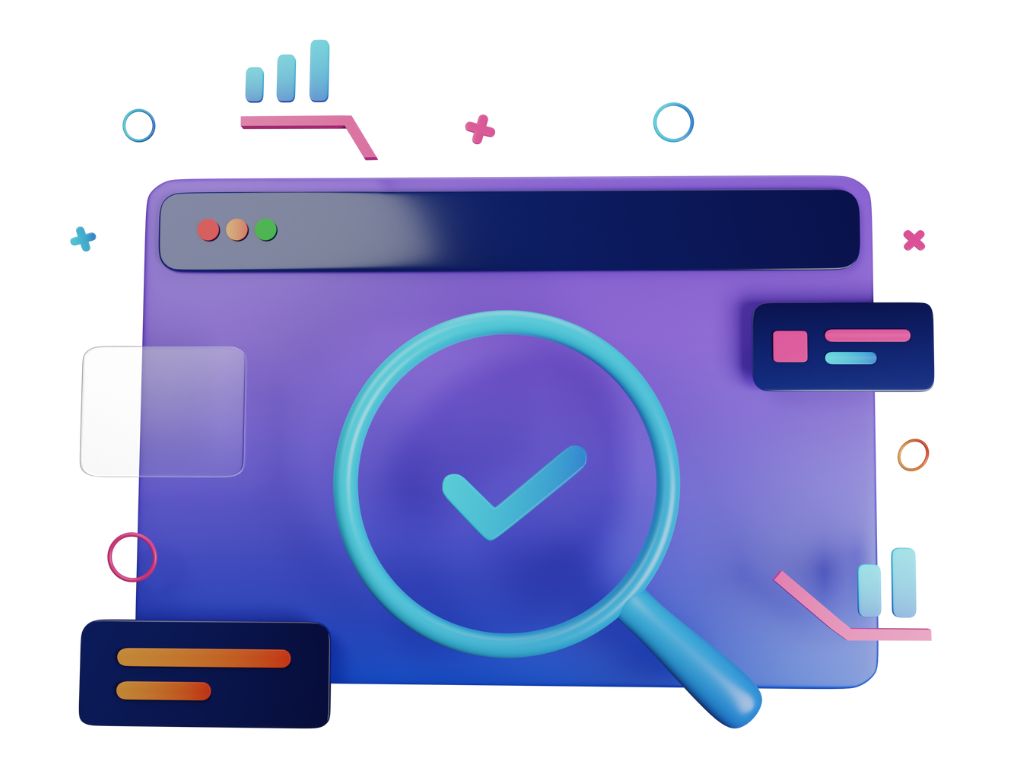
Beyond the Template: Optimizing Your Lead Magnet for Maximum Conversions
Creating a fantastic lead magnet is a massive achievement, but its job isn’t done just because it’s brilliant. The most impactful lead magnets aren’t just well-crafted; they’re strategically placed, beautifully presented, and tirelessly optimized to ensure they reach the right people and compel them to act.
Think of it as having a blockbuster movie, you still need a compelling trailer, a prime-time slot, and effective advertising for it to truly shine.
Here’s how to ensure your carefully crafted lead magnet performs at its peak:
1. Design a High-Converting Landing Page
Your lead magnet needs a dedicated home, and that’s a landing page built for conversion. This isn’t just another page on your website; it’s a focused sales page with one goal: to get the visitor to download your lead magnet.
- Irresistible Headline: Your headline should immediately grab attention and state the core benefit or transformation the lead magnet offers. Make it benefit-driven, not feature-driven.
- Benefit-Driven Copy: Clearly articulate the specific problem your lead magnet solves and the positive outcome your audience will experience. Use bullet points for scannability and focus on “what’s in it for them.”
- Compelling Visuals: Include an attractive mock-up of your lead magnet (e.g., a 3D rendering of an eBook, a screenshot of a template). This makes it tangible and increases perceived value.
- Concise Opt-in Form: Only ask for the absolute essential information (usually just name and email). The more fields, the lower the conversion rate.
- Strong Call to Action (CTA): Make your button text action-oriented and benefit-focused (e.g., “Get My Free Checklist Now,” “Download the Guide,” “Unlock Your Results”).
- Social Proof (Optional but Powerful): If you have testimonials or statistics related to the problem your lead magnet solves, sprinkle them in.
2. Strategic Placement for Maximum Visibility
Once your lead magnet has a home, you need to drive traffic to it. Don’t just bury it in a forgotten corner of your website.
- Website Pop-ups/Banners: Use strategically timed pop-ups or sticky banners on your website, especially on relevant blog posts or pages.
- Dedicated Blog Content Upgrades: Create specific blog posts that naturally lead into your lead magnet. Offer it as a “content upgrade” within the post, providing deeper value related to the topic.
- Sidebar & Footer Widgets: Keep a consistent offer in your website’s sidebar or footer.
- Social Media Bio & Posts: Link directly to your lead magnet’s landing page from your social media bios. Regularly create engaging posts that promote its benefits.
- Email Signatures: Include a subtle link to your lead magnet in your professional email signature.
- Guest Posts & Partnerships: When guest blogging or collaborating, mention your lead magnet as a valuable resource for their audience.
3. Optimize Your Opt-in Process
The moment of truth is when someone decides to give you their information. Make this process as smooth and reassuring as possible.
- Minimal Fields: Reiterate: less is more. For a lead magnet, often just a first name and email is sufficient.
- Clear Privacy Policy: Include a link to your privacy policy near the form to build trust and assure users their data is safe.
- Thank You Page & Instant Delivery: After submission, immediately redirect them to a thank you page that confirms their download and ideally provides an instant download link.
- Automated Welcome Email: Simultaneously, send a welcome email that includes the lead magnet download link again, thanks them, and sets expectations for future communication (e.g., “Look out for more tips from us every Tuesday!”). This also serves as a backup if they miss the thank you page.
4. Implement a Nurture Sequence
The lead magnet is just the beginning of the relationship. What happens next is crucial for converting leads into customers.
- Value-Driven Follow-up: Don’t just pitch immediately. Your initial emails should continue to provide value, educate, and build rapport based on the topic of the lead magnet.
- Segmented Communication: If your lead magnet (especially a quiz or assessment) gathers data, use that information to segment your audience and send highly personalized follow-up emails.
- Clear Path to Your Offer: Gradually introduce your paid offerings, showing how they provide a deeper solution to the problems your lead magnet initially addressed.
5. Test, Analyze, and Iterate Relentlessly
Optimization is an ongoing process, not a one-time task. What works today might not work tomorrow, and what works for one audience might not work for another.
- A/B Test Everything: Experiment with different headlines, landing page copy, images, CTA button text, form fields, and even the lead magnet format itself.
- Track Conversion Rates: Monitor how many visitors to your landing page convert into leads. This is your key metric.
- Analyze Traffic Sources: Understand where your most qualified leads are coming from so you can double down on those channels.
- Gather Feedback: Ask your audience what they found most valuable about the lead magnet and what other problems they need help with.
By meticulously optimizing every stage from promotion to delivery and beyond, you transform your lead magnet from a static file into a dynamic, lead-generating powerhouse that consistently fuels your funnel with engaged, qualified prospects.
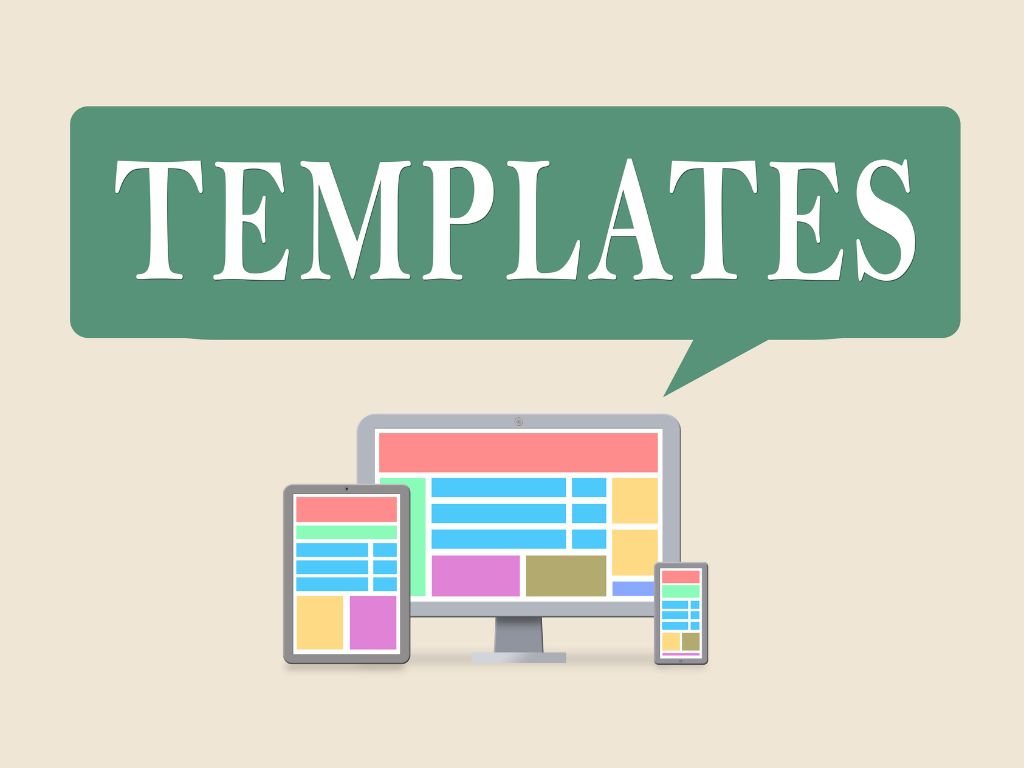
Implementing Your Lead Magnet: From Creation to Conversion
Creating a fantastic lead magnet is a massive achievement, but its job isn’t done just because it’s brilliant. The most impactful lead magnets aren’t just well-crafted; they’re strategically placed, beautifully presented, and tirelessly optimized to ensure they reach the right people and compel them to act.
Think of it as having a blockbuster movie, you still need a compelling trailer, a prime-time slot, and effective advertising for it to truly shine.
Here’s how to ensure your carefully crafted lead magnet performs at its peak:
1. Design a High-Converting Landing Page
Your lead magnet needs a dedicated home, and that’s a landing page built for conversion. This isn’t just another page on your website; it’s a focused sales page with one goal: to get the visitor to download your lead magnet.
- Irresistible Headline: Your headline should immediately grab attention and state the core benefit or transformation the lead magnet offers. Make it benefit-driven, not feature-driven.
- Benefit-Driven Copy: Clearly articulate the specific problem your lead magnet solves and the positive outcome your audience will experience. Use bullet points for scannability and focus on “what’s in it for them.”
- Compelling Visuals: Include an attractive mock-up of your lead magnet (e.g., a 3D rendering of an eBook, a screenshot of a template). This makes it tangible and increases perceived value.
- Concise Opt-in Form: Only ask for the absolute essential information (usually just name and email). The more fields, the lower the conversion rate.
- Strong Call to Action (CTA): Make your button text action-oriented and benefit-focused (e.g., “Get My Free Checklist Now,” “Download the Guide,” “Unlock Your Results”).
- Social Proof (Optional but Powerful): If you have testimonials or statistics related to the problem your lead magnet solves, sprinkle them in.
2. Strategic Placement for Maximum Visibility
Once your lead magnet has a home, you need to drive traffic to it. Don’t just bury it in a forgotten corner of your website.
- Website Pop-ups/Banners: Use strategically timed pop-ups or sticky banners on your website, especially on relevant blog posts or pages.
- Dedicated Blog Content Upgrades: Create specific blog posts that naturally lead into your lead magnet. Offer it as a “content upgrade” within the post, providing deeper value related to the topic.
- Sidebar & Footer Widgets: Keep a consistent offer in your website’s sidebar or footer.
- Social Media Bio & Posts: Link directly to your lead magnet’s landing page from your social media bios. Regularly create engaging posts that promote its benefits.
- Email Signatures: Include a subtle link to your lead magnet in your professional email signature.
- Guest Posts & Partnerships: When guest blogging or collaborating, mention your lead magnet as a valuable resource for their audience.
3. Optimize Your Opt-in Process
The moment of truth is when someone decides to give you their information. Make this process as smooth and reassuring as possible.
- Minimal Fields: Reiterate: less is more. For a lead magnet, often just a first name and email is sufficient.
- Clear Privacy Policy: Include a link to your privacy policy near the form to build trust and assure users their data is safe.
- Thank You Page & Instant Delivery: After submission, immediately redirect them to a thank you page that confirms their download and ideally provides an instant download link.
- Automated Welcome Email: Simultaneously, send a welcome email that includes the lead magnet download link again, thanks them, and sets expectations for future communication (e.g., “Look out for more tips from us every Tuesday!”). This also serves as a backup if they miss the thank you page.
4. Implement a Nurture Sequence
The lead magnet is just the beginning of the relationship. What happens next is crucial for converting leads into customers.
- Value-Driven Follow-up: Don’t just pitch immediately. Your initial emails should continue to provide value, educate, and build rapport based on the topic of the lead magnet.
- Segmented Communication: If your lead magnet (especially a quiz or assessment) gathers data, use that information to segment your audience and send highly personalized follow-up emails.
- Clear Path to Your Offer: Gradually introduce your paid offerings, showing how they provide a deeper solution to the problems your lead magnet initially addressed.
5. Test, Analyze, and Iterate Relentlessly
Optimization is an ongoing process, not a one-time task. What works today might not work tomorrow, and what works for one audience might not work for another.
- A/B Test Everything: Experiment with different headlines, landing page copy, images, CTA button text, form fields, and even the lead magnet format itself.
- Track Conversion Rates: Monitor how many visitors to your landing page convert into leads. This is your key metric.
- Analyze Traffic Sources: Understand where your most qualified leads are coming from so you can double down on those channels.
- Gather Feedback: Ask your audience what they found most valuable about the lead magnet and what other problems they need help with.
By meticulously optimizing every stage from promotion to delivery and beyond, you transform your lead magnet from a static file into a dynamic, lead-generating powerhouse that consistently fuels your funnel with engaged, qualified prospects.
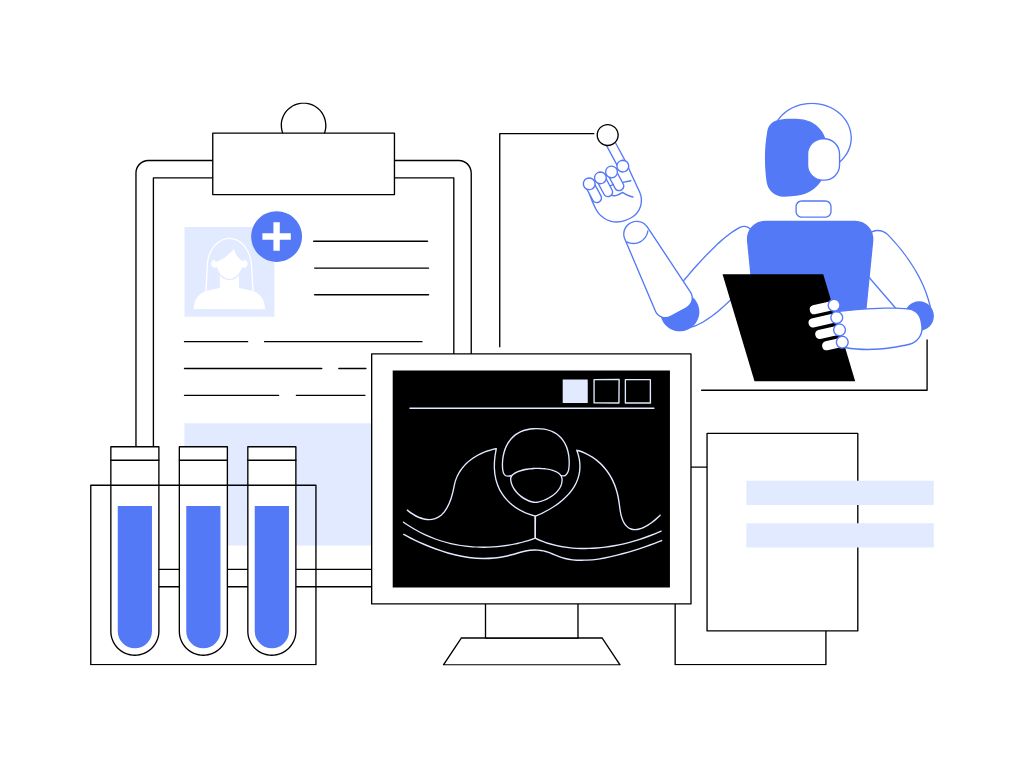
Your Next Steps to Funnel Transformation
You’ve now got the blueprint for transforming your funnel from a leaky bucket into a lead-generating powerhouse. The secret isn’t a complex hack or an expensive tool; it’s the strategic deployment of a high-converting lead magnet.
This isn’t just about getting an email address; it’s about initiating a valuable relationship built on trust and immediate value.
So, where do you go from here? Don’t let this knowledge simply sit. Take action and start building your funnel’s new engine today!
Here are your immediate next steps:
- Revisit Your Audience: Before anything else, dive deep into understanding your ideal customer. What are their burning questions, their urgent pain points, and their deepest desires? Your lead magnet’s success hinges on truly knowing who you’re speaking to.
- Map Your Funnel: Consider where your prospects are in their journey. Are you aiming for broad awareness (ToFu), deeper consideration (MoFu), or direct conversion (BoFu)? This will dictate the type of lead magnet that will be most effective.
- Pick Your Power Template: Based on your audience and funnel stage, choose one of the proven templates we’ve explored:
- Instant-Value Checklist/Cheat Sheet: For quick wins and immediate action (ToFu).
- Comprehensive Mini-Guide/eBook: For deeper education and authority building (MoFu).
- Engaging Quiz/Assessment: For personalized insights and data collection (ToFu/MoFu).
- Practical Toolkit/Template Pack: For “done-for-you” solutions and immense time savings (MoFu).
- Craft Your Irresistible Offer: Focus on solving a specific problem, delivering high perceived value, and making it easy and quick to consume. Remember, quality over quantity!
- Optimize for Conversion: Don’t forget the critical steps of designing a compelling landing page, strategically placing your offer, streamlining the opt-in process, and planning your nurture sequence. Your lead magnet is only as good as its visibility and follow-through.
- Launch & Learn: Get your lead magnet out there! Then, commit to testing, analyzing your results, and iterating. Marketing is an ongoing conversation, and your lead magnet is the first, most important sentence.
The transformation of your funnel begins with this single, powerful step. By providing genuine value upfront, you’re not just collecting leads, you’re cultivating relationships that will fuel your business growth for years to come. What are you waiting for? Your audience is ready for the value you have to offer.

Frequently Asked Questions (FAQ) About Lead Magnet Templates
1. What is the best lead magnet for beginners?
For beginners, the easiest and fastest option is a checklist or cheat sheet. These require minimal copywriting, are quick to design in tools like Canva, and deliver an immediate “quick win” for your audience.
2. How do I choose the right lead magnet template for my audience?
First, identify your audience’s biggest problem or goal. Then, match your lead magnet type to their funnel stage:
- Top of Funnel (ToFu): Checklists, cheat sheets, quizzes
- Middle of Funnel (MoFu): Mini-guides, template packs, webinars
- Bottom of Funnel (BoFu): Free trials, consultations, pricing guides
3. How do I make my lead magnet stand out?
Give it a clear, results-driven promise in the title, make it visually appealing, and ensure it solves a specific problem. The more instantly useful it is, the higher your conversions will be.
4. Do lead magnet templates actually work for conversions?
Yes, when done right. Templates save your audience time and effort, which increases perceived value. They also demonstrate your expertise and subtly lead into your paid offerings.
5. How many lead magnets should I create?
Start with one that directly solves your audience’s most urgent pain point. Once it’s converting well, create additional lead magnets for different audience segments or funnel stages.
6. What’s the best way to deliver a lead magnet?
Use an automated email sent immediately after someone opts in. Include a direct download link and a thank-you page with the next step you want them to take.
7. Can I use free templates for my lead magnet?
Yes, but check licensing terms. Platforms like Canva and Visme have many free, customizable templates that can be adapted for your brand.
8. How do I measure my lead magnet’s success?
Track conversion rate (opt-ins ÷ landing page visits), email engagement (open and click rates), and eventual sales generated from those leads.
One Response to Simple Lead Magnet Templates To Boost Convertions